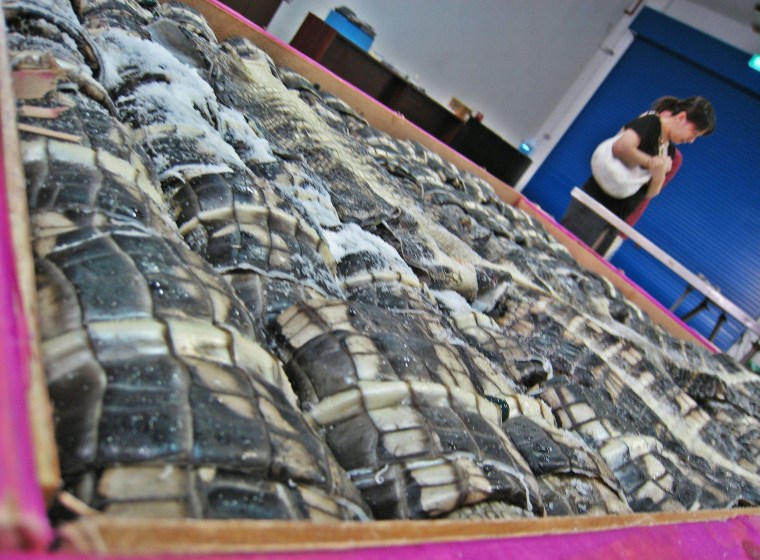As conspicuous consumption loses some of its cachet during the recession, the swamp's most conspicuous consumers have less to fear from humans.
Instead of taking the half-million alligator eggs from marshes and swamps that they had in recent years, alligator farmers are expected to pull in 30,000 this year, with a final tally in December. And state wildlife officials expect the 2009 harvest of adult gators, which begins Aug. 26, to amount to a small fraction of last year's 35,500.
Nobody's buying, said Rapides Parish nuisance-alligator control officer Ron Guy. He's among more than 60 people around the state who get called if a gator wanders out of its bayou and into a local golf course or backyard. Their pay is the right to sell the skins.
Gators brought Louisiana farmers and hunters $71 million in 2007, modest revenue even at that peak. This year, revenue is expected to be closer to $10 million in 2009, a drop like locals say they've never seen.
"My father was in the fur and alligator business. I started buying fur and alligators when I was 13 years old," said Wayne Sagrera, 65, who has about 75,000 alligators at Vermilion Gator Farm Inc. in Abbeville. "I've seen some slowdowns. But nothing to compare to this."
People who are still buying expensive accessories have shifted away from conspicuous consumption — for instance, Jimmy Choo is selling obvious faux-crocodile as well as the real thing, fashion consultant Robert Burke said.
"There's certainly a sensitivity in the luxury market of anything that is too much luxury, and alligator would fit into that category," Burke said.
His income from hauling off nuisance alligators let Guy leave construction work six years ago, but he's back now — and running out far less often for alligators.
"Instead of going on every call as soon as it comes in, you prioritize them," Guy said. "If it's under a car in the Sonic parking lot, you've got to go."
Demand for crocodilian leather, including the large alligator and crocodile skins used for handbags and the caiman leather used for cowboy boots, dropped more than 40 percent worldwide between the first quarter of 2008 and first quarter of 2009, according to Choon Heong Koh, executive director of Singapore tannery Heng Long International Ltd.
Demand for small, farmed hides used for watchbands fell even more dramatically — 80 percent or more, he said in an e-mail to The Associated Press.
Luxury watches are "such a high-end item — when those people stop spending money you get real nervous," said Dave Travers, owner of Sebring Custom Tanning in Sebring, Fla.
Even John Price — whose Insta-Gator Ranch and Hatchery in Covington gets 40 percent of its income from tours, including egg-hatching tours that start in mid-August each year — has suffered. He usually raises about 1,500 alligators a year to sell their hides. Instead of collecting 1,500 eggs this year from the wild, he collected 200 — and those are largely for people who want to hold eggs while they hatch.
"We have customers who have booked the right to hatch an alligator. I don't want to call them back and say, 'Sorry, we're not doing it,'" Price said.
About 30 of those 200 'gators will wind up back in the wild. As part of the program that brought alligators back from the brink of extinction, Louisiana's 59 licensed alligator farmers must return about 15 percent of those they raise to the swamps they came from.
That's about the same share that would survive non-human predators during their first four years in swamps and marshes.
